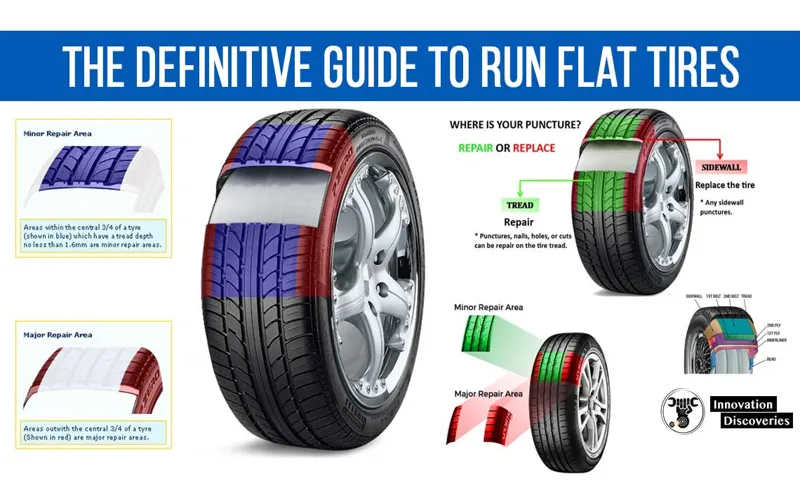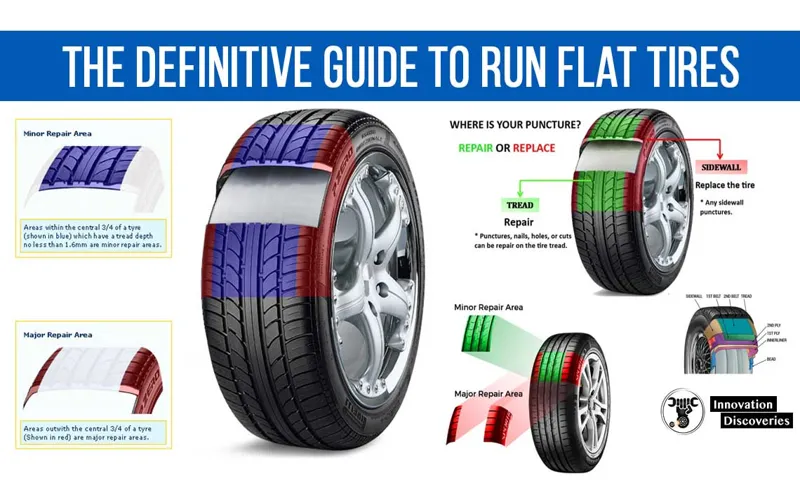Have you ever been driving along, minding your own business, and suddenly feel a thud? You look down at your dashboard and see that dreaded symbol – the tire pressure warning light. You pull over to the side of the road and inspect your tires, only to find that one of them is completely flat. It’s a frustrating experience, but it’s one that most of us have encountered at some point in our driving lives.
So, what exactly is a flat tire, and what should you do when you experience one? Let’s dive in.
Table of Contents
Definition
A flat tire is a condition where your vehicle’s tire loses air pressure and becomes deflated. It can happen due to various reasons ranging from puncture or blowout to improper tire maintenance. It can also occur when you run over sharp objects or debris on the road that can cause damage to the tire, leading to a flat tire.
It’s essential to keep an eye on your car tires and check their pressure regularly to avoid such situations. If you notice any signs of a flat tire, such as a bulge or deformation, or if you experience a sudden decrease in vehicle handling and performance, it’s imperative to replace or repair the tire immediately. Remember to always keep a spare tire in your car in case of emergencies, as well as a tire jack and lug wrench for changing the tire.
By being proactive and vigilant, you can avoid the hassle of a flat tire and ensure your safety on the road.
Explanation of Flat Tire
A flat tire is a common occurrence that can happen to anyone while driving. It happens when the air pressure inside the tire drops, causing the tire to deflate and lose its shape. This can be caused by various factors such as a puncture, a damaged valve stem, or even just normal wear and tear.
When a tire is flat, it can make driving unsafe and difficult, and must be fixed immediately. Driving on a flat tire can cause further damage to the tire, as well as to other parts of the car. Proper maintenance of your tires can help prevent a flat from occurring, such as regularly checking tire pressure and inspecting for signs of wear.
If you do experience a flat tire, it’s important to have it repaired or replaced as soon as possible to ensure your safety on the road. Remember, a little precaution can go a long way in avoiding this common inconvenience.

Causes of a Flat Tire
A flat tire is a frustrating and sometimes dangerous situation that can happen unexpectedly while driving. It occurs when the tire loses pressure and becomes deflated, often resulting in a loss of control and handling of the vehicle. There can be several causes of a flat tire, including punctures from sharp objects on the road such as nails or glass, damage to the tire’s sidewalls or valve stem, or a leak from a damaged or corroded wheel rim.
Over time, wear and tear can also lead to a flat tire, especially if the tires have not been properly maintained or replaced when necessary. It’s important to regularly check your tire pressure, inspect your tires for any signs of damage or wear, and avoid driving over hazardous road debris to prevent flat tires. Remember, the best way to avoid a flat tire is to be proactive in taking care of your vehicle’s tires!
Punctured Tires
It’s frustrating enough to be driving down the road when suddenly you hear that dreaded thumping sound. A flat tire is a nuisance, it’s inconvenient, and it can be dangerous if you’re driving at high speeds. But what causes a flat tire? The most common cause is a puncture in the tire.
Sharp objects on the road such as nails, screws, and broken glass can easily pierce the rubber of your tire causing a slow leak or a sudden blowout. It’s important to be aware of any hazardous objects on the road while driving, and to steer clear of them when possible. Other causes of flat tires include worn tire treads, excessive weight, rough terrain, and extreme heat.
Punctured tires can happen to anyone, car owners, and drivers alike, so it’s important to always be prepared with a spare tire, tire jack, and tire repair kit. Remember to always check your tires for punctures or signs of wear and tear regularly.
Valve Stem Issues
Valve stem issues are one of the most common causes of a flat tire. This small but essential component can be prone to damage or failure, resulting in a loss of air pressure over time or sudden blowouts while driving. Valve stems are the part of the tire that connects the tire to the rim and controls the air flow in and out of the tire.
Any damage or wear to this area can affect the tire’s pressure and increase the risk of a flat. Some common causes of valve stem issues include aging, wear and tear, corrosion, and exposure to extreme weather conditions. To prevent valve stem issues, it’s important to regularly check your tire pressure, inspect your valve stems for signs of wear and damage, and replace damaged or worn stems as soon as possible.
By taking proper care of your valve stems, you can reduce your risk of sudden blowouts and keep your vehicle running safely and smoothly.
Bead Leaks
Bead leaks are one of the common reasons for tire punctures. The bead is the part of the tire that makes a seal with the rim of the wheel. A leak in the bead can be caused by a damaged bead or loose mounting, causing air to escape, leading to a flat tire.
It’s important to ensure that your tire is mounted correctly and that there are no damages on the bead area of the tire. Other common causes of flat tires include punctures from sharp objects or debris on the road, aging tires, and underinflation, which puts extra pressure on the tire and can cause it to fail. Checking your tire pressure regularly and replacing your tires when they are worn or damaged can help prevent bead leaks and other causes of flat tires.
Remember, safety comes first, so never drive on a damaged tire as it can be hazardous and lead to serious accidents.
Rim Leaks
Rim leaks are a common cause of flat tires, and can be frustrating to deal with. There are several potential causes of rim leaks, including damage to the tire’s bead or sidewall, corrosion or damage to the wheel rim, or a damaged valve stem. In addition, over-inflating or under-inflating your tires can also increase the likelihood of developing a leak.
If you notice your tire losing air pressure slowly or consistently, it’s important to bring your vehicle to a trusted mechanic or tire specialist to have the issue addressed. Ignoring a rim leak can lead to decreased fuel efficiency, increased wear on your tires, and even potentially dangerous blowouts. By being proactive and addressing any issues with your tires and rims as soon as they arise, you can help to ensure a safe and smooth driving experience.
Signs of a Flat Tire
If you’ve ever experienced a flat tire, you know it’s never a pleasant experience. A flat tire can occur for many reasons, such as a puncture or leaky valve, and can happen at any time. So, what does a flat tire mean for you? Simply put, it means trouble.
You may notice several signs that indicate your tire is flat, including a change in your vehicle’s handling, a thumping noise, or a sudden decrease in speed. Other signs include a noticeable bulge in your tire, a visual sign of damage, or a sudden loss of air pressure. Regardless of the signs, it’s imperative to pull over and assess the situation.
Continuing to drive on a flat tire can cause irreparable damage to your vehicle’s wheel, leading to costly replacements. Remember, safety first when experiencing a flat tire on the road.
Car Pulling to One Side
If you notice your car pulling to one side, there may be several reasons for it, but one of the most common causes is a flat tire. A flat tire can throw off the balance of your car, causing it to pull to one side. If you suspect that you have a flat tire, there are a few signs you should look for.
Check the tires for bulges, cracks, or cuts on the sides or treads. If you see any of these signs, it may indicate that your tire is ready to fail. Another telltale sign of a flat tire is a sudden drop in tire pressure.
If you experience a sudden drop in pressure, it’s essential to get your tire checked immediately. Remember, neglecting tire maintenance can result in costly repairs and even a safety hazard. To ensure the proper functioning of your car, it’s essential to keep an eye on your tires’ condition and get them replaced as needed.
Flapping Sound while Driving
If you’re hearing a flapping sound while driving, it could be a sign of a flat tire. This is especially true if the sound increases in frequency as you drive faster. Other signs of a flat tire include uneven tire wear, a noticeable bulge on the sidewall of the tire, and a decrease in fuel efficiency.
Sometimes, you may even be able to feel a vibration or wobbling sensation in the steering wheel. If you suspect a flat tire, it’s important to get it checked out as soon as possible. Continuing to drive on a flat tire can cause further damage to your vehicle and even lead to a dangerous blowout.
Remember, regular tire maintenance is key to preventing flat tires. Be sure to check your tire pressure regularly and inspect your tires for any signs of damage or wear. By staying proactive, you can help avoid a potentially costly and dangerous situation on the road.
Prevention Tips
If you’ve ever experienced a flat tire, you know how frustrating and potentially dangerous it can be. But what exactly does a flat tire mean? Well, simply put, it means that the tire has lost air pressure, causing it to go flat and lose its round shape. This can happen for a variety of reasons, including punctures from sharp objects on the road, improper inflation, and normal wear and tear over time.
To prevent a flat tire, it’s important to regularly check your tire pressure, rotate your tires as recommended by your vehicle’s manufacturer, and avoid driving over debris or potholes whenever possible. Additionally, consider investing in high-quality tires that are designed to withstand the rigors of everyday driving. By taking these steps, you can help ensure that your tires remain in good condition and minimize the risk of experiencing a flat tire.
Conclusion
In conclusion, a flat tire can mean many things. It can mean you’re running low on air, you hit a sharp object, or you simply have bad luck. But no matter what the reason, a flat tire is a reminder that life is unpredictable and we need to be ready for anything.
So, next time you find yourself with a flat tire, embrace the adventure and know that you have the power to fix the problem and keep rolling on.”
FAQs
What are the common causes of a flat tire?
The common causes of a flat tire are punctures, leaks, worn-out tires, and bad valve stems.
How do I know if my tire needs to be replaced?
You should replace your tire when it is bald, has visible damage or cracks, or is more than 6 years old.
Can I drive on a flat tire?
No, you should not drive on a flat tire as it can cause damage to your rims and put you in danger of a blowout or accident.
How long can I drive on a spare tire?
You should only drive on a spare tire for a limited distance, usually between 50 to 70 miles, and at a limited speed.
How can I prevent flat tires?
You can prevent flat tires by regularly checking your tire pressure, inspecting your tires for damage, and avoiding potholes and debris on the road.
Can I repair a flat tire myself?
You can repair a flat tire yourself with a tire repair kit, but it is recommended to get it professionally repaired or replaced for safety reasons.
How much does it cost to repair or replace a flat tire?
The cost to repair or replace a flat tire can vary depending on the type of tire and extent of damage, but it typically ranges from $20 to $250.



